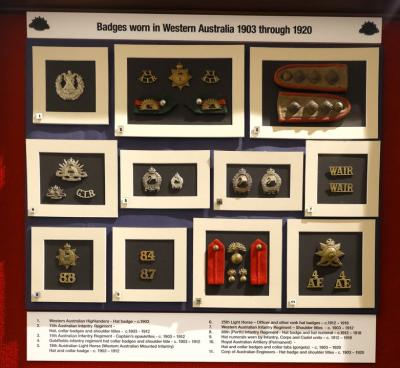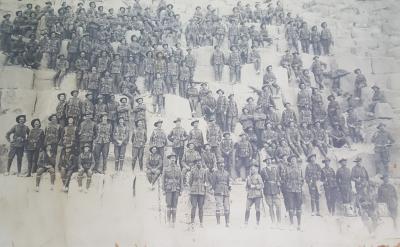World War 2, Mannequin Diorama, Kokoda Trail, 2/16 Battalion, 1942 (1 of 3)
One of three mannequins depicting conditions on the Kokoda Trail experienced by 2/16 Battalion AIF in 1942
After sailing from Egypt on 30 January 1942, most of the 2/16th - over 350 members of the battalion had absented themselves without leave when their transport had called briefly at Fremantle - disembarked at Adelaide on 25 March 1942. The battalion's stay in Australia was brief. On 12 August it arrived at Port Moresby in Papua, and by 29 August was in action against the Japanese at Abuari on the Kokoda Trail. Forced to withdraw, the 2/16th fought a series of desperate actions back along the Trail. It suffered particularly heavily at Mission Ridge on 8 September when it had to fight its way out of a Japanese encirclement. The 2/16th's ordeal on the Trail ended with its relief at Imita Ridge on 16 September. By this time the battalion was so weak that it had been amalgamated with the 2/14th to form a composite battalion. After a short rest, the 2/16th, once again functioning as a separate battalion, joined the operations at Gona on 26 November. Consisting of only two companies when it entered the fighting, the 2/16th left Gona, on 7 January 1943, only 56 strong.
Details
Details
This diorama is located in the South West Pacific portion of the World War 2 Gallery at the Australian Army Museum of Western Australia.
Australian Army Museum of Western Australia
Australian Army Museum of Western Australia
More items like this
Other items from Australian Army Museum of Western Australia
- World War 2, Home Front Technology Context - Portable Typewriter
- Inter-War, Western Australia, Fremantle, Garrison Artillery, 1938
- World War 2, Mannequin Diorama, Kokoda Trail, 2/16 Battalion, 1942 (3 of 3)
- Medium Fire Support Vehicle / Medium Reconnaissance Vehicle
- Pre 1914, Medals Display, British Colonial Wars
- World War 1, Western Front, Last 100 Days Display, 1918
- Pre 1914, Western Australia, Badges Display, 1903-1920
- World War 1, Eastern Mediterranean, Egypt, Cheops Pyramid, 11 Battalion, 1915
- World War 1, Australia, Home Front, Conscription Referenda, "Yes" Button
- World War 1, Australia, Home Front, Conscription Referenda, "No" Button
- World War 1, Eastern Mediterranean, Egypt, Cheops Pyramid, 12 Battalion
- Honour Board - United and Ancient Order of Druids, Lodge 359













